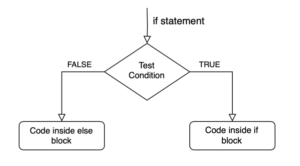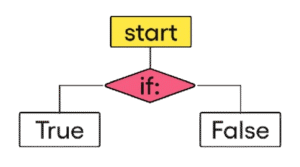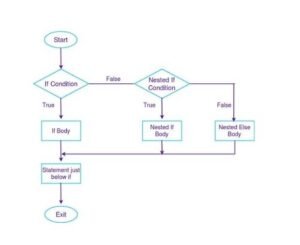If-Else, Loops, and Control Flow in Python
Control flow allows us to make decisions and repeat actions in a Python program. These tools help the program behave differently based on conditions and automate repetitive tasks.
If-Else Statements (Conditional Logic)
Conditional statements are a fundamental concept in programming that allows you to make decisions based on certain conditions. These statements enable your code to execute different blocks of code depending on whether specific conditions are met or not. In this blog post, we'll delve into the basics of conditional statements, starting with the ubiquitous if-else statement and gradually exploring more complex scenarios.
The `if-else` Statement

‘if statement’ is used to execute a block of code only if a certain condition is met. It allows us to conditionally execute code based on whether the specified condition is true.
‘else statement’, on the other hand, is an optional companion to the if statement. It specifies what code to execute if the condition in the if statement is not met (i.e. if it is false).
Loops (for and while)
'For' and 'while' loops are two of the most fundamental iterative operations in programming. Although they share similarities, they have distinct mechanics and applications. This article explores the core differences between these two types of loops and their ideal use cases. Whether you're a novice coder or an experienced developer, comprehending these differences is essential for making informed decisions about loop usage in various programming scenarios.
Loop Control Statements
Python provides special statements to control loop execution:
break: Exits the loop early.continue: Skips the current iteration and moves to the next one.pass: A placeholder that does nothing; used where syntax requires a statement.

The execution starts and checks if the condition is True or False. A condition could be any logic that we want to test in our program. If its true it will execute the body of the loop and if its false, It will exit the loop.
Nested If and Loops
Explanation of How Nested If-else Works
- The outer if-else statement’s condition is evaluated first.
- If this condition is true, the code block within the if statement is executed, which may contain further nested if-else statements.
- If the outer condition is false, the code block within the outer else is executed, which could also contain nested if-else statements.
- Each nested if-else statement works the same way: if the condition is true, its if block is executed.If false, its else block is executed.
- This nesting can occur at multiple levels deep, with each level having its own if-else logic.
- The execution is not necessarily sequential from one if-else to another. It depends on the branching caused by the true or false evaluations at each level.
Summary
- Use
if-elif-elseto handle decision-making. - Use
forloops to iterate over known sequences. - Use
whileloops when repetition depends on a condition. - Use
breakandcontinueto control loop flow more precisely.

